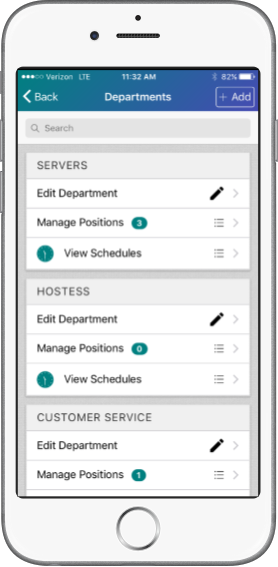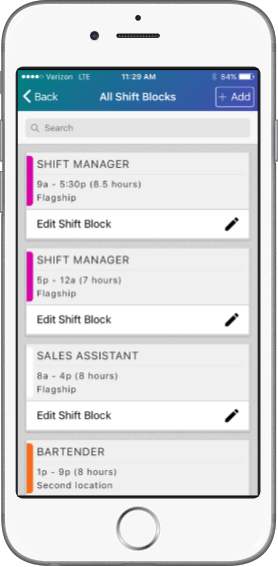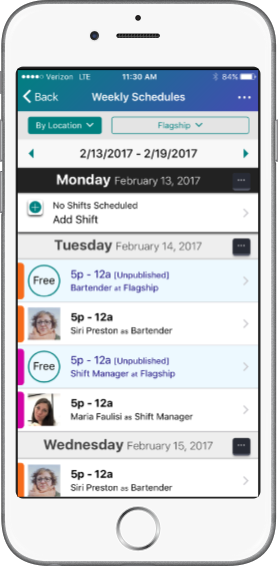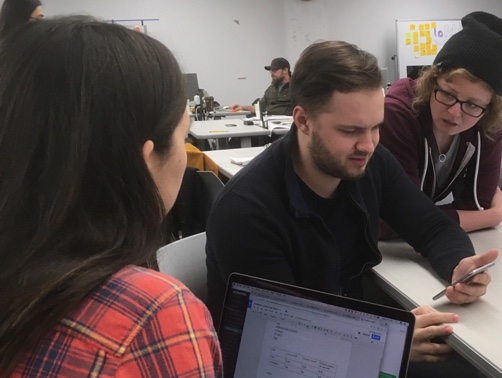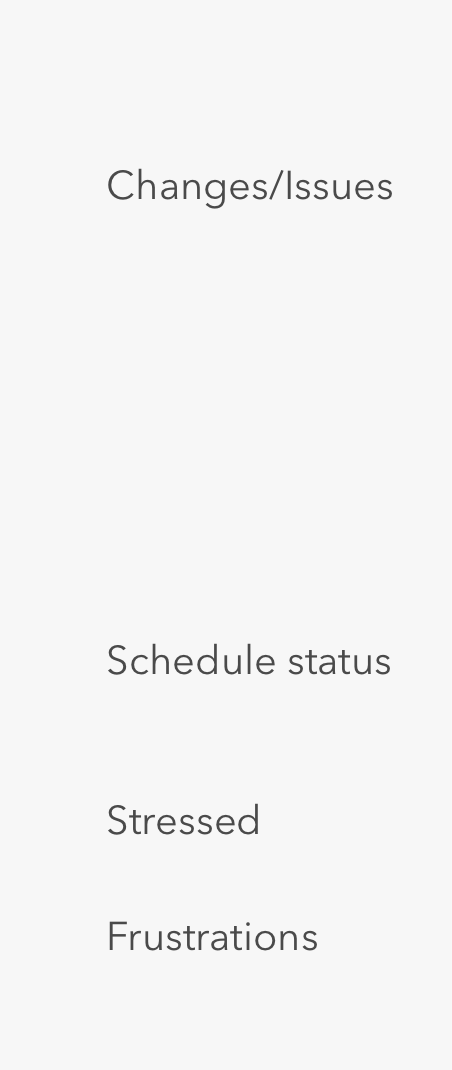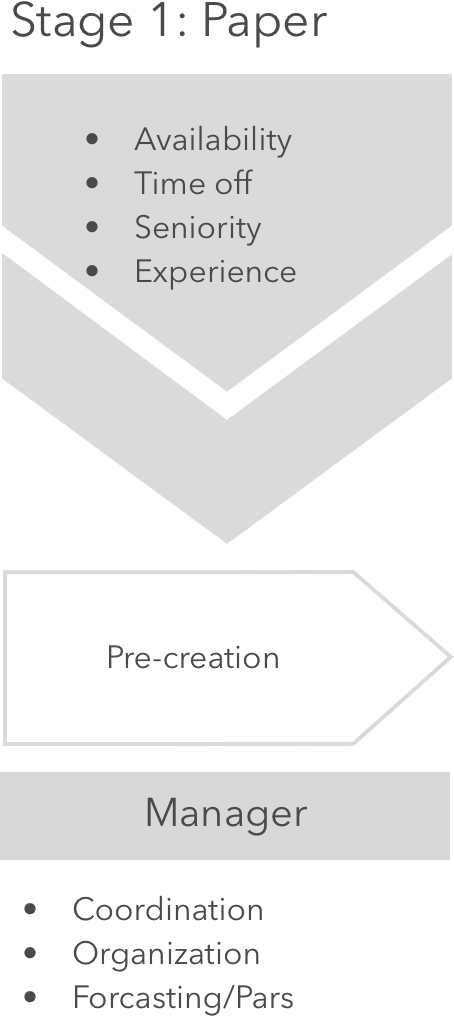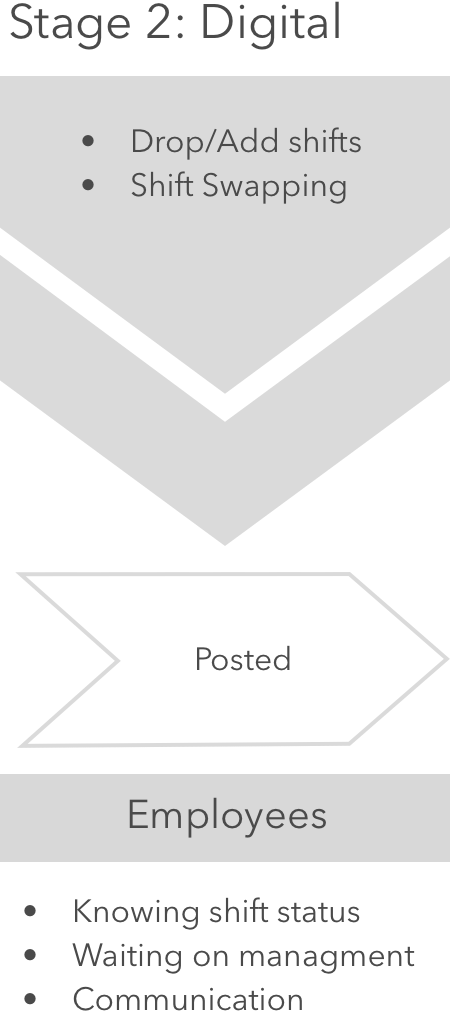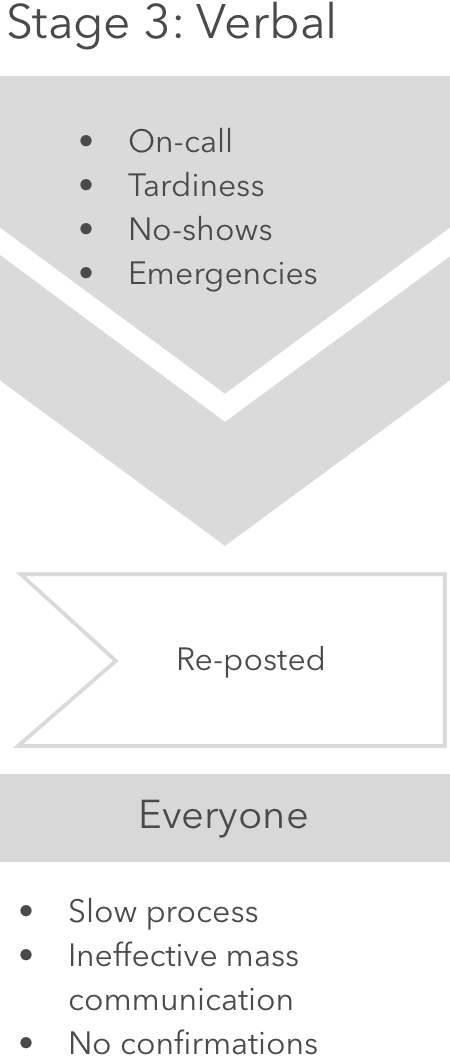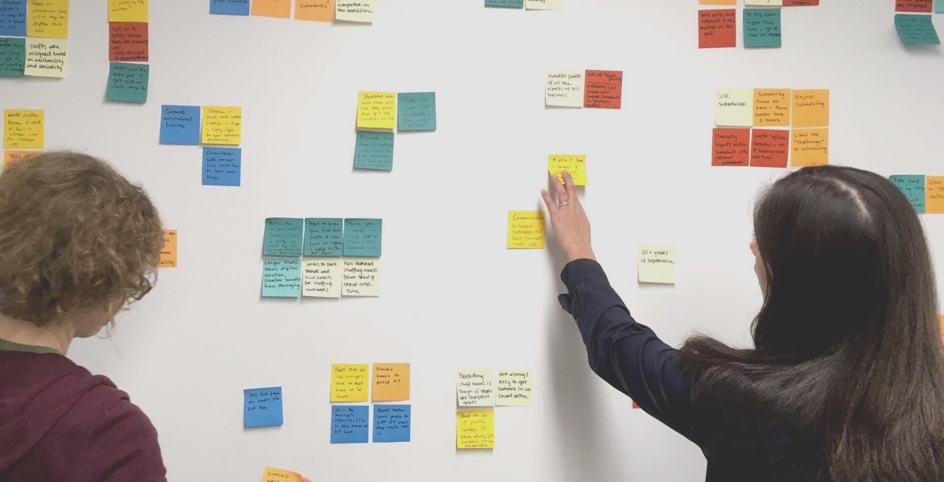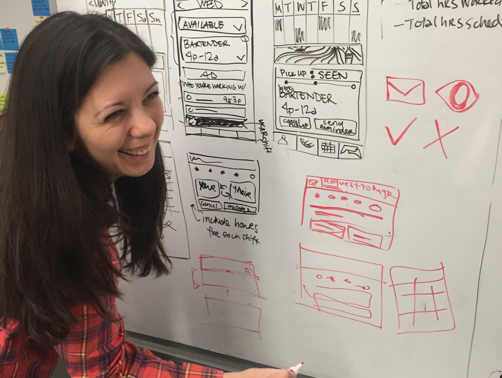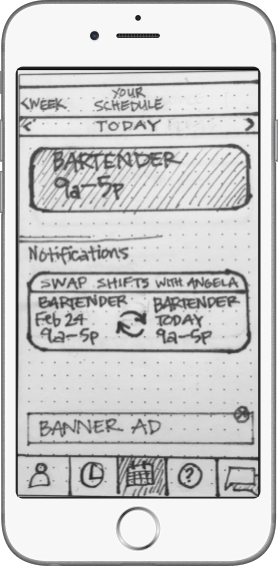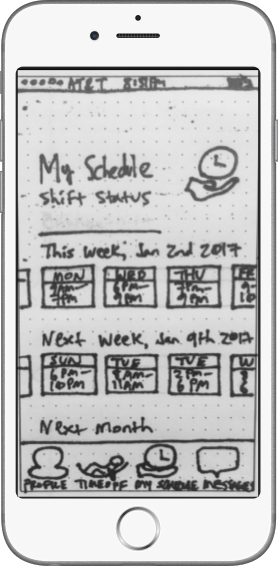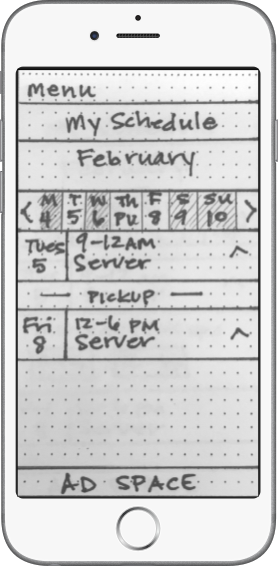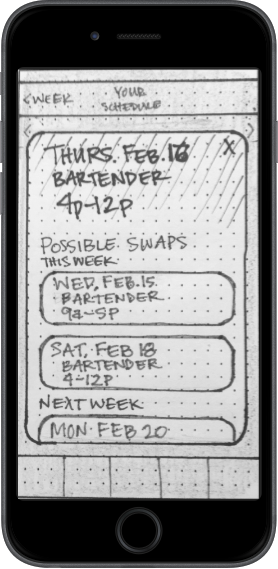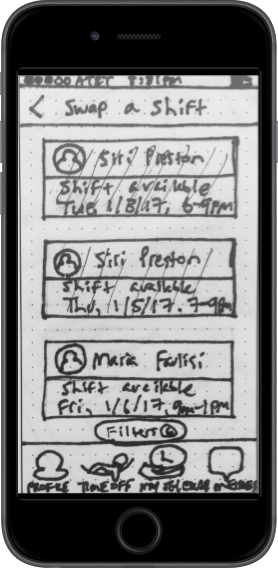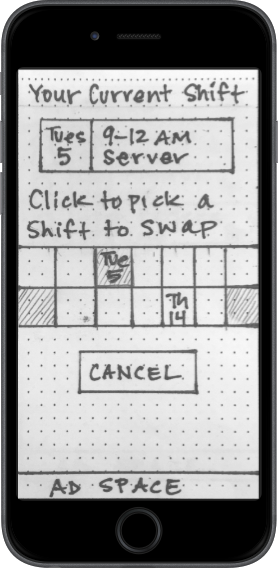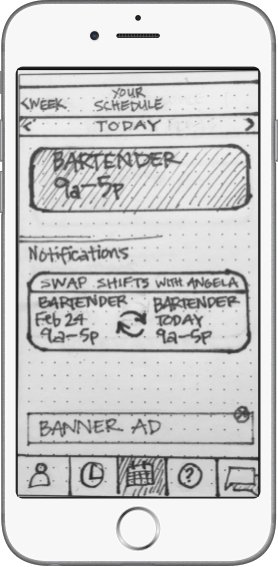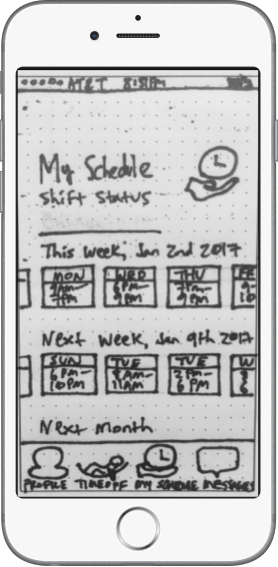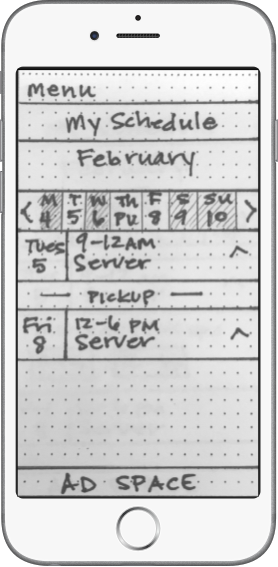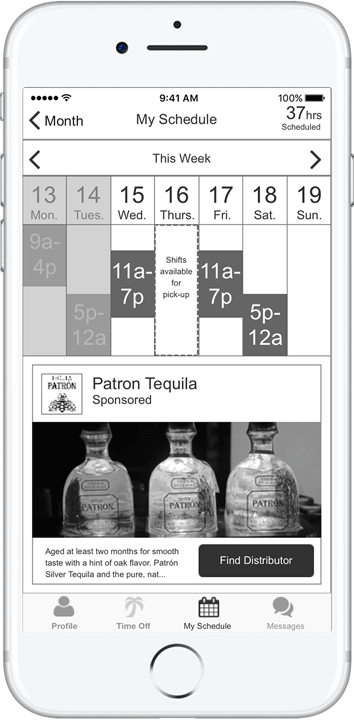Many rounds of concept testing helped us solidify the areas we should focus on and how they should be presented. We busied ourselves with combining the best of what worked.
The final prototype integrates a week view, and allows users to initiate all shift actions from the schedule view. It displays available pickup shifts within the week view and integrates all actions from the shift itself. The time off page is clean and features a large CTA for new requests.
As we ended our final days of the project, we tested the prototype to gauge its effectiveness. We tested two random users and made quick fixes before testing the final three. We asked prototype testers to complete the major employee shift actions.
Pickup shift
85%
Faster

Request time off
23%
Faster
The current app didn’t have swap shift functionality. Testers enjoyed it and found it easy to use.
